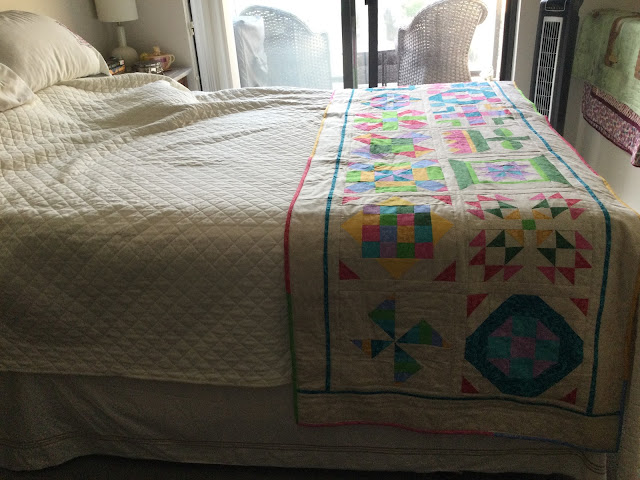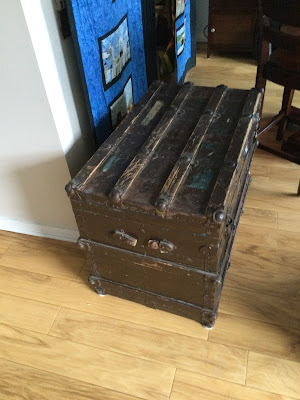Pixelating my quilt - Tutorial.
 |
| Excel sheet with colours all numbered. See key below to understand. |
I've been working on a pixelated quilt that I learned from Crafty. I calculated how much material I would need if I made the quilt out of 2 and a half inch squares. in the end they will be 2 inch squares. Once I did that I used the excel sheet I made and started to place my squares. By using an excel sheet with the picture as the background I was able to place my picture in the
background (see Background section under Layout).
I used an online web site that will accept pictures and pixelated the picture for me. It's at Patchwork Pattern Maker at this link. It's free but you do need an account to save your stuff. Otherwise you're doing a screen shot.
Then using the colour bucket (see below)
I was able to colour over the picture the colours I wanted to use, and then use each colour with a letter so I could count up the letters . The paintbucket icon is located here in Word:
 |
| See paintbucket above to the right. |
 |
| Key of squares and yardage. |
That's what gave me the key to see how many squares I needed. Then I took that number and times it by 2 and 1/2 inches to see the approximate amount of inches. Don't forget that there are 1512 inches in a yard of material that is 115 cms across. When I got the number in the 4th column shown here I did a guesstimate, and that gave me the approximate yardage of material I needed. Remember, this is a guesstimate and it's better to over estimate then under, in case you need more material. I underestimated the gold, was short, so I used more gray and tan/yellow to make up for it.
To understand the full formulas you could go to Craftsy and take Carol Sheridan's course on "Pictures to Pixel Quilts". It's free and well worth the time. She does a great job of teaching.
 |
| Squares on the interfacing. |
When you have all the squares cut you can then follow the map you made (the excel sheet) and start placing the squares on a large piece of light interfacing (the very cheap stuff will work). You place the squares side by side in rows, as straight as you can, horizontally and vertically. There is some stuff you can buy from quilt places like light interfacing but it contains pre-drawn square sections to help you line up your squares - but interfacing works the same way and my squares are fairly straight. See to the right.
 |
| Placement of sqaures. |
Here is a bigger picture for you to see what I mean. My squares all ready, the iron, and interfacing to do a small section I needed. It is my recommendation that you do the length of the quilt when placing your squares, right across. And do 10 at a time, to have a good section. When all is placed, I just place the iron on top of the squares for a few minutes, then lift straight up, move to a new section (place iron straight down), then up and to a new section, etc. Do not run it side to side, you may get some of the interfacing glue on you, or you may lift one of the squares.
 |
| Press the other side when you have pressed straight down on the side ofthe squares. |
When you have pressed all squares straight down, then you can turn over the section, and iron side to side.
Now you sew the sections together. It's simple. You fold the sections over at where the squares meet then you just sew 1/4 inch each section, one after the other, etc. It down not matter if you do this vertically or horizontally. I've done both. Make sure you're accurate with the 1/4 inch on all the squares.
 |
| All sections sewn. |
Once you've sewn them all you need to iron the seams down in the same direction, then clip between the sections so you can then sew the other direction down (vertically or horizontally. See the cuts below. Some do go across the sewing line but not by much, and when you sew in the other direction you will go over these cuts. Once you've sewn the other sides of the squares, you can iron down the seams again.
.JPG) |
| Cuts so you can fold the squares to sew again. |
\
Here's my quilt so far, from far it is starting to look like a sunflower.
So happy! I'll share a picture of the final quilt when it's down.
I hope this tutorial helped somewhat.



.JPG)



Comments
Post a Comment